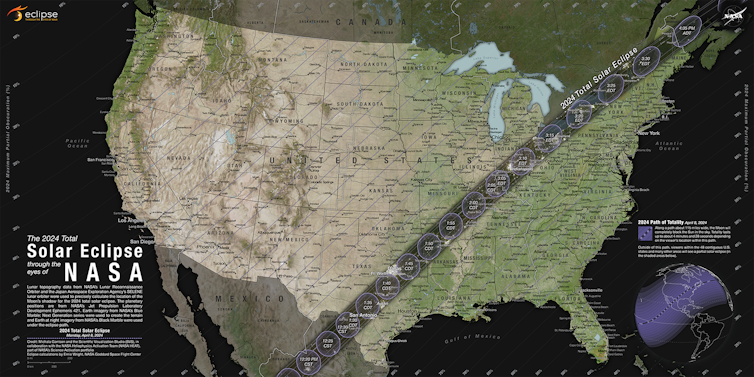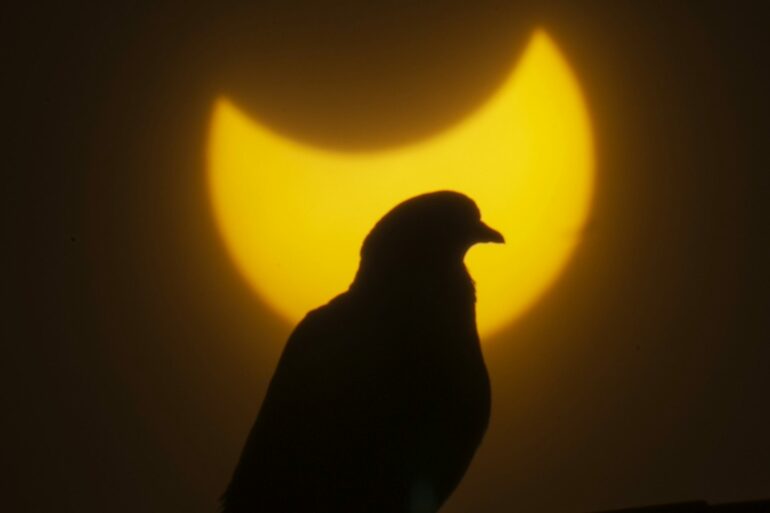The total solar eclipse on April 8, 2024, coincides with an exciting time for wild birds. Local birds are singing for mates and fighting for territories as they gear up for their once-a-year chance to breed.
Tens of millions of migrating birds will be passing through the path of totality, and they mostly migrate at night.
Because birds use light to match their behaviors to their environment, scientists like us have lots of questions about how they will respond to the eclipse. Will they pause their fighting and wooing and shift toward bedtime-like behaviors? How about a nocturnal animal like an owl or those nighttime migrants – will they start to rustle from their roosts before they realize it’s not night?
As behavioral biologists at Indiana University, we research wild breeding birds, with a goal of understanding why animals behave the way that they do in response to environmental challenges and opportunities. For the 2024 eclipse, our team is launching a new project and developing an app. If everything goes as planned, we should end up with a large dataset after the eclipse, collected by community scientist volunteers across the country.
There’s an app for that
On average, a total solar eclipse occurs in the same place only once every 375 years. Most wild animals, like most people, have never seen the sky quickly switch to night in the middle of the day. These rare events are a natural experiment that can help scientists like us understand how animals respond to an unusual sudden change in light.

The path of totality for the 2024 total solar eclipse.
NASA
Most past research on animal behavior during total solar eclipses is anecdotal. Observers have reported that zoo animals acted distressed or went into their enclosures. Scientists have spotted spiders starting the nightly deconstruction of their webs in the middle of the day, and farmers have heard their roosters start to crow after totality, as if it’s once again dawn. Other reports suggest more subtle effects on animal behavior.
Massive amounts of standardized data can help to make sense of these observations. But because totality covers such a large swath of the globe in a short amount of time, it would be impossible for one scientist or even one small team to get enough observations to figure out why some animals respond more strongly to a solar eclipse than others.
With collaborators across our campus – including Jo Anne Tracey at the Office of Science Outreach and Paul Macklin at Indiana University’s Luddy School of Informatics, Computing, and Engineering – we have created an app called SolarBird.
Anyone can download SolarBird for free in the Apple Store and Google Play. The app asks participants to find a bird and watch it or listen to it for 30 seconds, while clicking a few prompts on what the bird does before, during and after totality. You don’t need to have any prior knowledge or bird expertise to…



